► Aston Martin DBX707 gets a new interior
► Still monstrously powerful and capable
► Performance SUV tested in the UK
It’s a busy time in Aston Martin towers at the moment. It’s recently launched the DB12 and accompanying Volante, introduced the new overhauled Vantage to much fanfare and later this year the Vanquish will return.
But it’s not forgetting what has become its new bread-and-butter, the DBX. Accounting for well over half of Aston’s sales, it’s become the performance SUV to beat from a driver’s perspective, but it’s always had one major weakness from the start – its interior.
Despite introducing the acclaimed DBX707 a couple of years ago, the cabin stayed the same and remained a slightly odd amalgamation of 2015-era Mercedes parts (for any doubt, this is not high praise). Aston Martin admits as much that the system was ‘frustrating’ for customers and a regular source of negative feedback, so can a new interior change that?
At a glance
Pros: Incredible to drive, monstrous power reserves, drastically-improved interior
Cons: Still some minor quality concerns, Greta won’t like it
What’s new?
It’s the new interior that headlines the changes, which Aston Martin says has required an entirely new electrical architecture for its digital instrument cluster and touchscreen. It’s broadly the same setup as in the new DB12 and Vantage, with a bit more screen surface area given there’s more space to fill.
Though the previous DBX’s screen might look like it was controlled by touch, it was instead the Mercedes clickwheel and touchpad that operated it, both of which were impressively fiddly. But this time it’s a proper touchscreen and you can even get wireless Apple CarPlay now and Android Auto (soon) for the first time. Aston says it will be one of the first firms to get the new version of CarPlay when it’s released later in the year too.
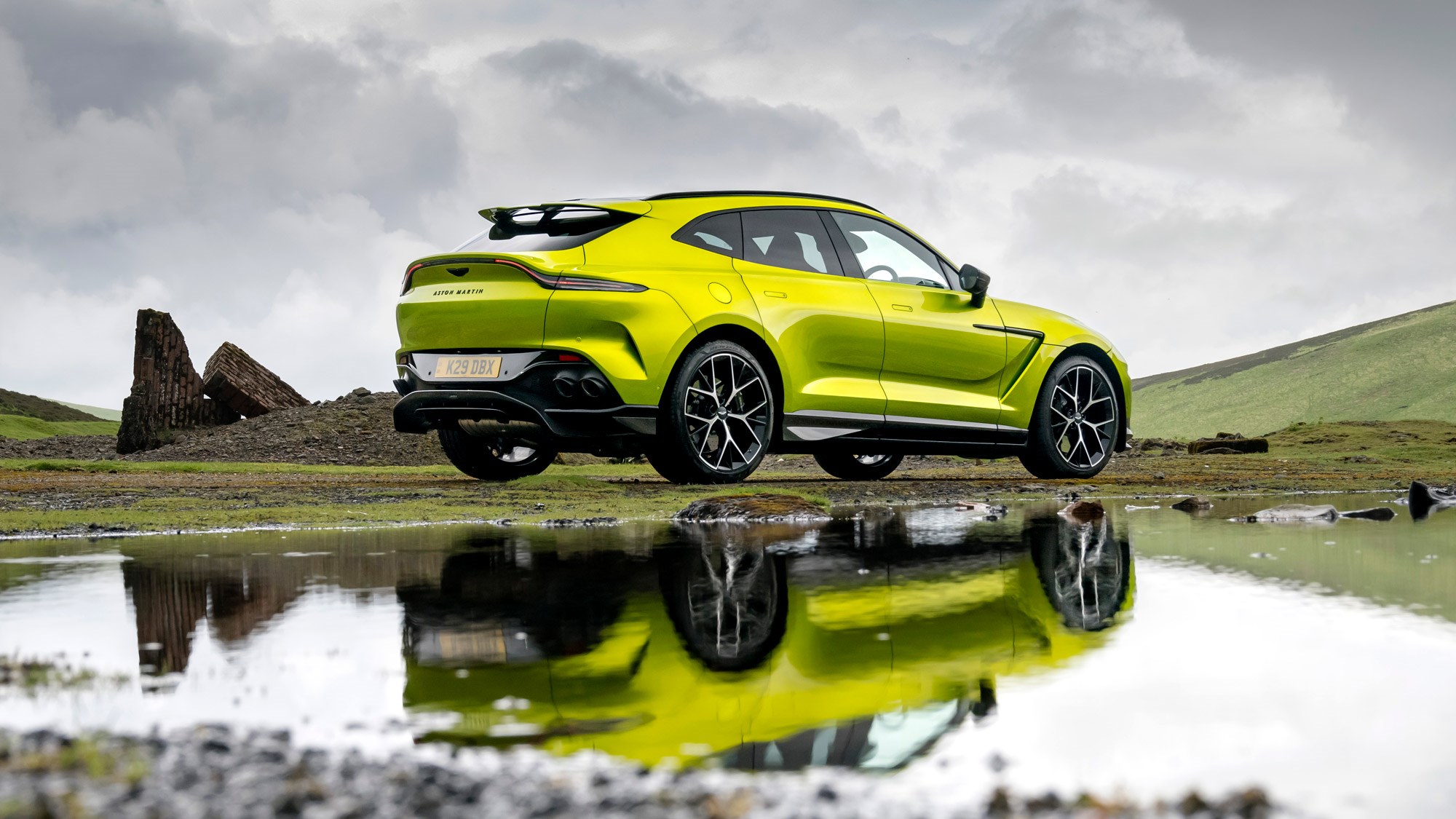
The firm reckons we’ve reached ‘peak screen’ and so has retained plenty of physical controls for elements such as the climate and changing driving modes, developing its own system away from what it calls Mercedes’ ‘mega screens’.
But it’s not all about the interior changes. Aston has now dropped the regular DBX, leaving only the 707 as it says 90 per cent of its orders were for this more powerful model anyway. Small changes have also been made to the steering and body control, while the exhaust has been retuned to make more noise from lower revs. This can only be a good thing.
What are the specs?
At the DBX707’s launch back in 2022, this was the most powerful SUV you could buy in Europe, but it’s amazing how quickly things change. The naturally-aspirated Ferrari Purosangue has marginally more, while Porsche’s flagship Cayenne hybrid puts out additional and if you go down the electric route, the Lotus Eletre outpowers them all.
But with 697bhp (or 707PS, hence the name), it’s not exactly lacking. Its 4.0-litre twin-turbo V8 is almost the same as before, meaning the sprint to 62mph is dispatched in just 3.3 seconds and given the opportunity to stretch its legs, 193mph is possible.
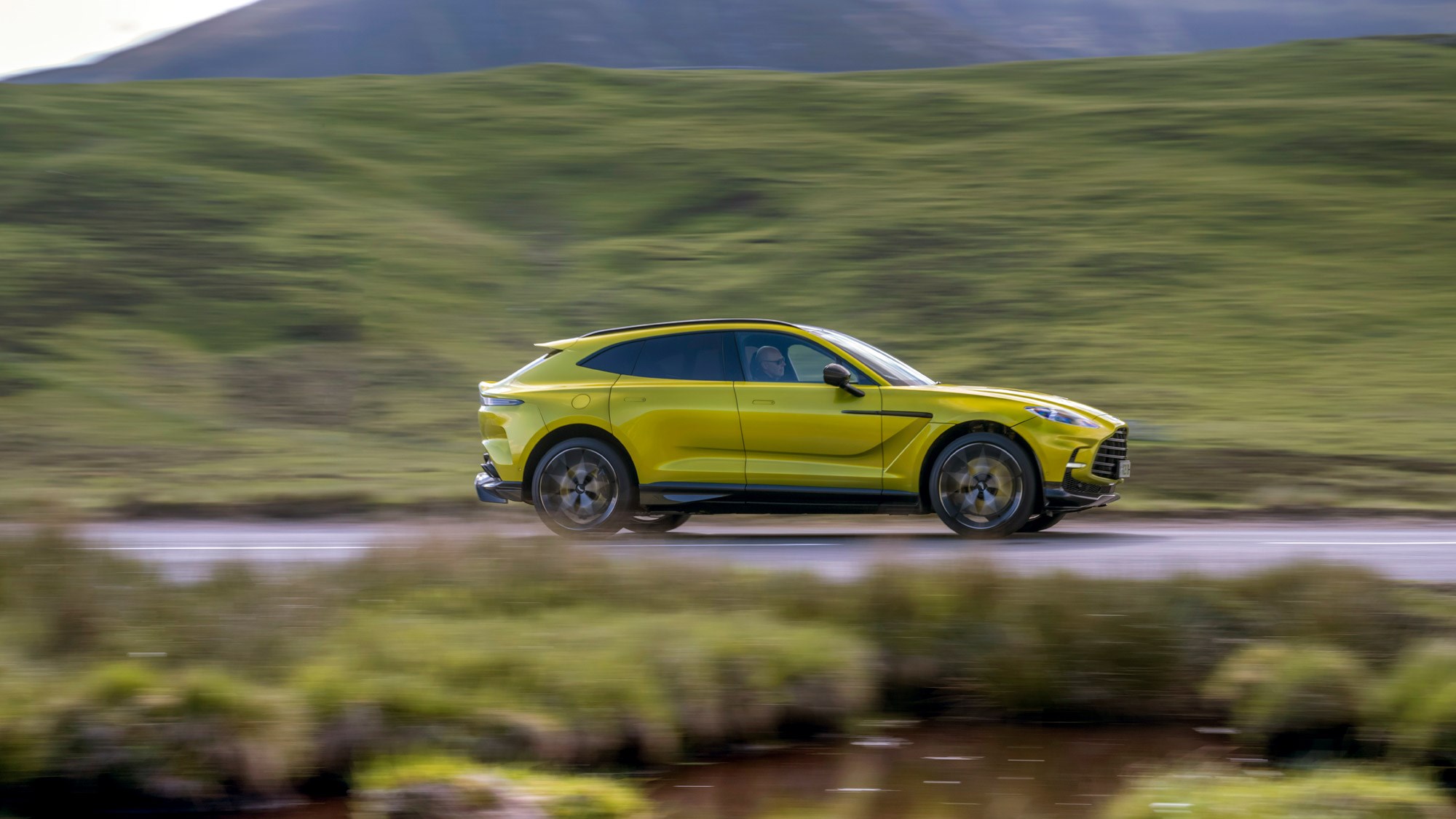
A nine-speed automatic gearbox continues to be used, and while obviously all-wheel-drive, you can choose to send all 664lb ft of torque to the rear wheels. Aston’s chief engineer Andy Tokley is often said to be found drifting one around Aston’s handling circuit.
What’s it like to drive?
CAR’s latest drive in the new DBX707 was from Aston Martin’s Gaydon HQ up to Edinburgh and on the Friday before a bank holiday. Not optimal conditions (though we know how good it is already) but one that shows this SUV’s sheer breadth of talent.
The day starts on the UK’s unofficial autobahn, the M40, before heading straight into less-than-joyous M42 traffic around Birmingham. It’s the sort of journey where you’d usually curse at being in an Aston Martin but with the superb driver assists, excellent seating position (though I’m a bit wide for the standard sports seats) and an engine that settles down to a whisper when not needed, it’s a great way to munch up the miles.

Refinement is excellent, with Aston reshaping the mirrors specifically to reduce wind noise. Every little helps, as they say. Despite riding on optional 23-inch alloy wheels, the ride and isolated road noise are exceptional at speed. If you hit a bump, you’re aware of it (more from an audible aspect) but it’s never jarring and never influences the steering.
I cross over to the A1 to stretch its legs in the Scottish Borders around Kielder Forest, among the best roads in the UK in my opinion. It’s time to finally take the DBX out of its ‘GT’ setting and boy this SUV can shift. Stick it in Sport+, press the manual button that locks the gearshifter so if you hit the limiter, that’s your fault, and the way this SUV surges at the horizon is astounding. The V8 burble is even more addictive than before, but never in a particularly antisocial way.
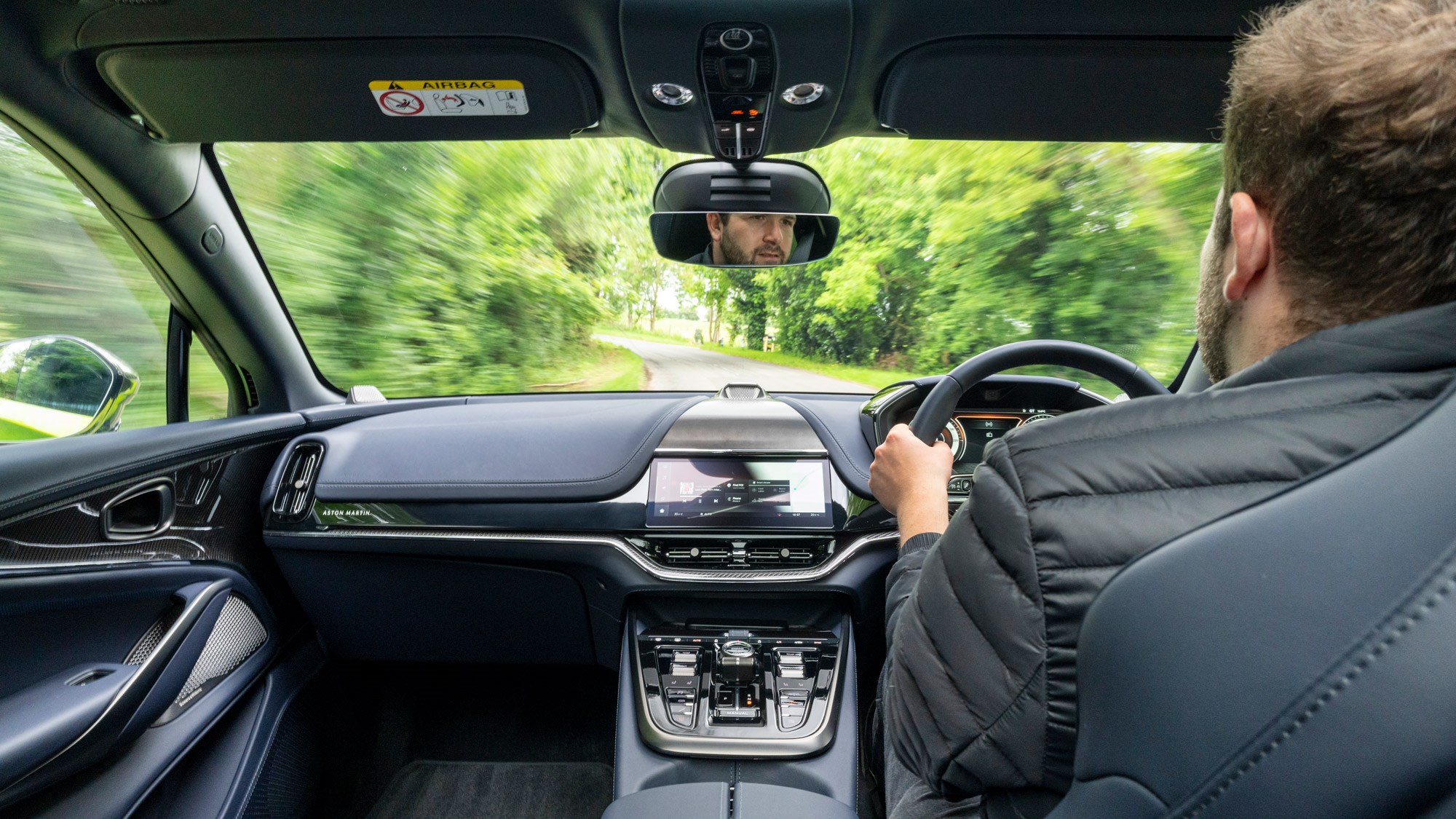
The steering is wonderfully precise and accurate, more so in the ‘Sport’ setting, and it’s exceptionally easy to place through sweeping or tight curves. There’s lots of weight to it but it’s all genuine and not artificial, as is so often the case.
The brake feel is wonderful and among the best of any car on sale. For ceramics, especially of this size, there’s none of that usual grabbiness to them, and they’re brilliantly modulated. You’re always aware of the DBX’s sheer width, but the way it handles for a car of this size and weight is remarkable. Saying it drives like a sports car is such an overused cliche, but yes, I’m going to use it again.
What about the interior?
Aston isn’t shy about the fact the DBX’s interior was the element that let the side down, so it’s clear lots of work has gone into improving it. The new 10.25-inch touchscreen is a big improvement; easy to use and super quick to operate. It transforms the experience, and the new digital instrument cluster (larger than the one found in the DB12 and Vantage) is clear and easy to change, though the new steering wheel buttons that work with tiny touchpads aren’t the most intuitive. The touchscreen itself is also quite prone to glare and can be quite hard to read in direct sunlight.
A big deal has been made about retaining physical buttons for things such as climate control and altering driving modes, which is a welcome direction to take. Fans of buttons will rejoice at the centre console being covered in things to press, carried over from the outgoing car. However, they can feel a bit cheap and are easy to press by accident. Some additional haptic feedback would be welcome, as would a proper button for turning off the irritating (but mandatory) speed bonging.
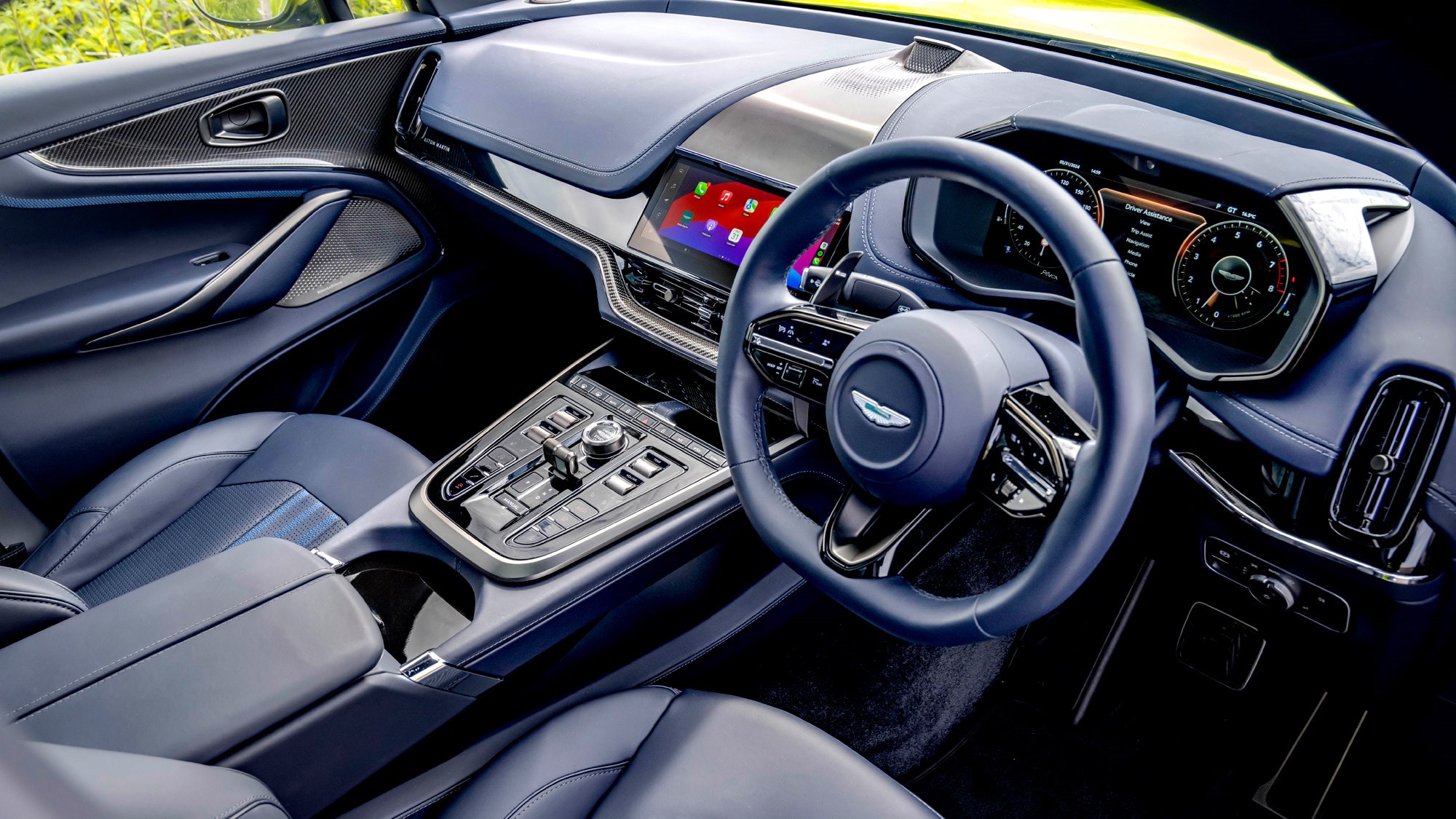
These are small nitpicks in what is generally a fantastic overhaul, with the general luxurious cabin feel remaining, along with acres of interior space. The DBX is finally that Aston Martin that can comfortably carry rear passengers, and with a massive 638 boot to go with it.
Before you buy (trims and rivals)
As we’ve mentioned, if you want a new DBX it has to be the 707, which previously commanded around £24,000 on top of the standard car, and now comes in at £205,000, and that’s before you go down the options list. The superb Bowers & Wilkins sound system is something not worth compromising on.
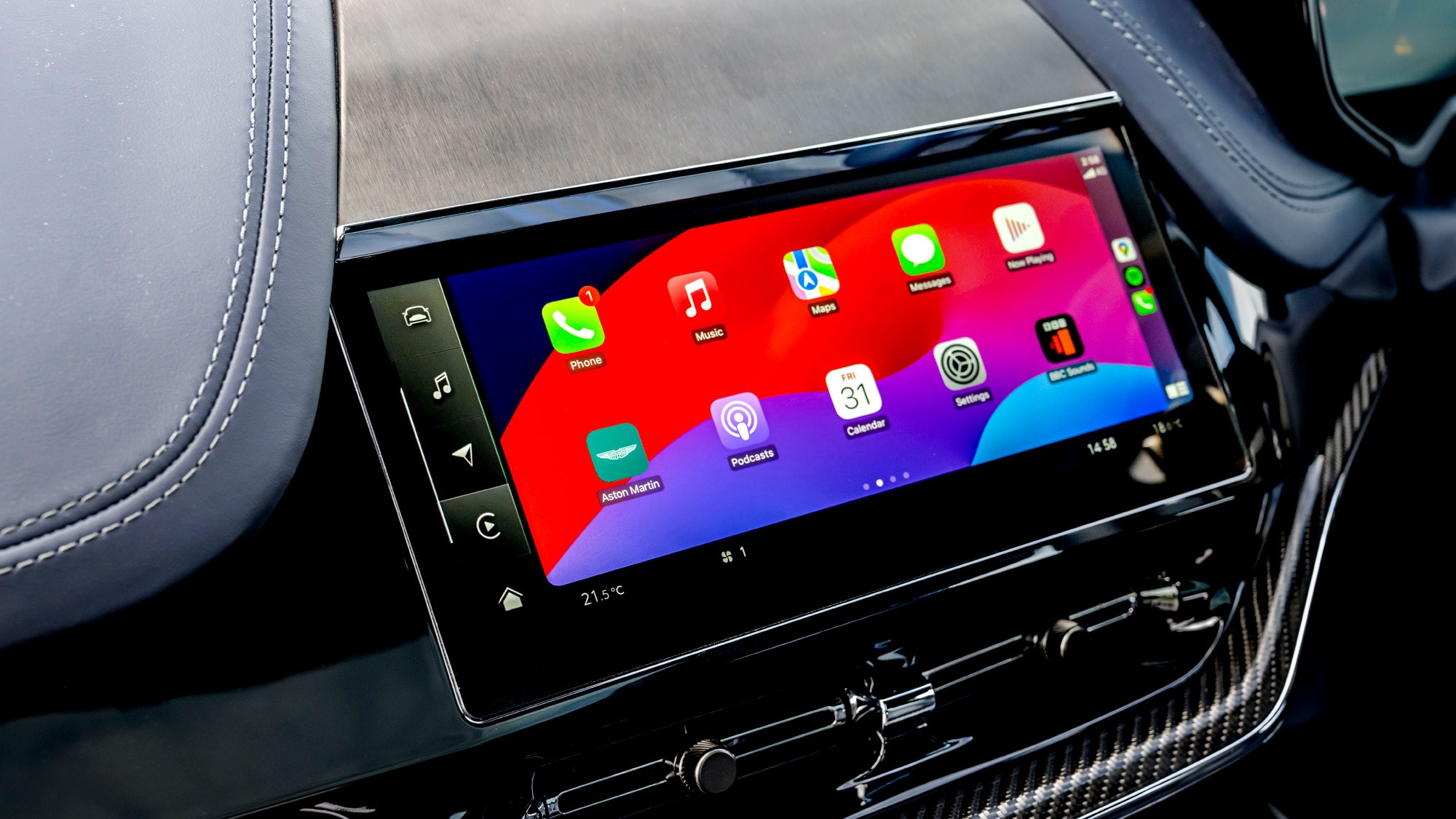
Visual changes compared to the previous DBX are fairly minimal, there are some new paint colours – including the high-vis-esque Photon Lime pictured, which I personally love – new wheel colours and Aston Martin’s new logo.
Verdict
The Aston Martin DBX707 has been an excellent car let down by one thing, its interior. This new version is a significant step forward in that respect, and the absence of old Mercedes switchgear is welcome – the only carry-over that reminds me of an old GLC is the electric boot button and the unpleasant wipers and indicators all on the same stalk.
But you’ll still be buying this Aston for the way it looks (is there a better-looking SUV?) and for the remarkable way this DBX707 drives. The new interior is not perfect, but any improvement was welcome and still feels like the icing on top of the cake.